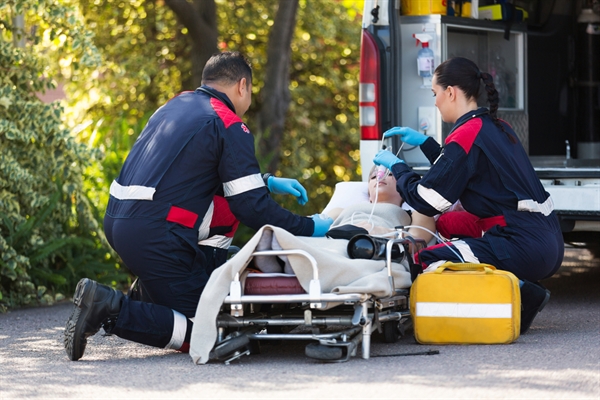Both EMT’s and Paramedics are trained healthcare professionals who respond to medical and traumatic emergencies in a pre-hospital setting. While both professionals are highly skilled and have extremely important roles, there are differences in their roles and education levels.
Two Main Differences
The two main differences between an EMT and a Paramedic are the amount of education they receive and their scope of practice (i.e. what they are allowed to do):
Emergency Medical Technicians (EMT’s)
EMT training involves 150 hours of classroom education, including hours of externship, and required numbers of real live-patient assessments. There is also an advanced training to become an EMT-Intermediate (EMT-I), which requires another 250 hours of training. (Don’t know about EMT-I/AEMT, we don’t use them in PA)
EMT’s are trained to provide basic-level life support to people who are hurt or injured. They can perform:
- CPR/Automated Defibrillation
- Artificial ventilation
- Oxygen administration
- Basic airway management
- Spinal immobilization
- Vital signs
- Bandaging/splinting/wound care
- A variety of rescue operations, including vehicle rescue, FEMA’s Incident Command System training, and HazMat awareness.
EMT-I’s can perform additional skills like intravenous therapy and manual defibrillation.
Paramedics
Paramedic training requires 1,000-1,200 per national standard curriculum hours in the classroom, plus an additional internship and field training.
Once licensed, Paramedics maintain specialty classifications including, but not limited to: Advanced Cardiac Life Support, Pediatric Advanced Life Support, Critical Care Paramedic and Certified Flight Paramedic.
Paramedics provide pre-hospital advanced life support, including:
- Advanced airway management
- Endotracheal intubation (breathing tube)
- Manual defibrillation and artificial pacemaking
- ECG (Electrocardiograph)monitoring
- IV fluid and medication therapy
- Administration of a wide array of medications and electromechanical as well as pneumatic ventilation
- And much more…
Whether you remain as an EMT or proceed to become a paramedic, you’ll be making an important contribution to your community. Both of these professions are great careers that are in demand, providing you with excellent professional growth opportunities and stable employment.

